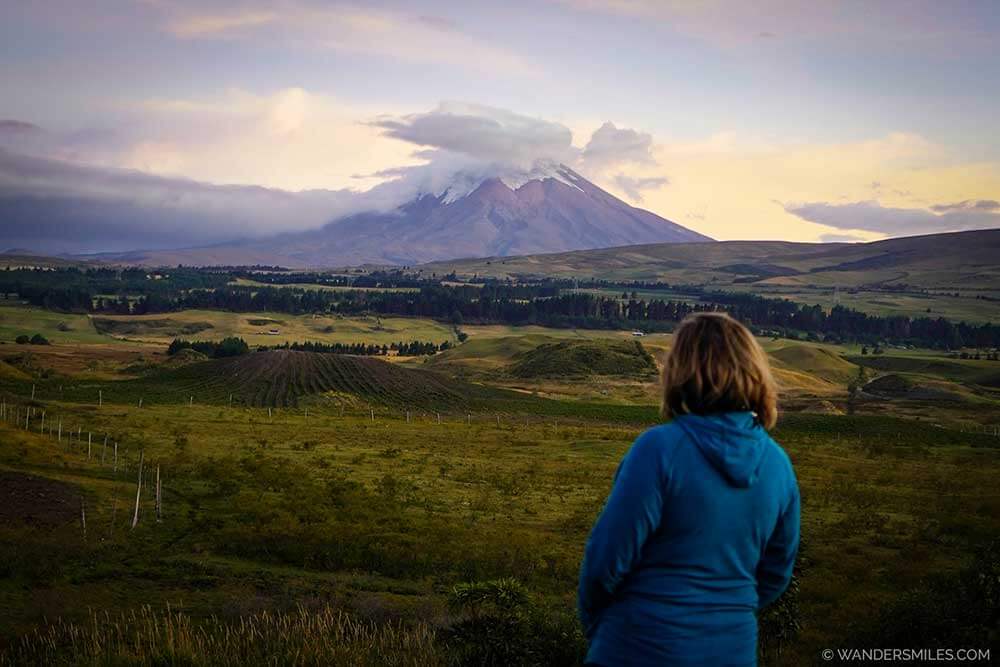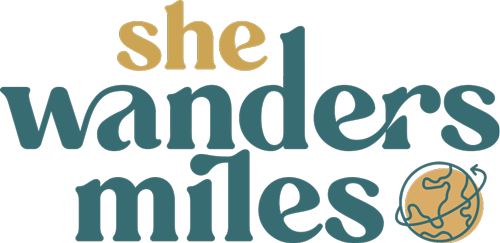What is Slow Travel? Benefits and How To Be a Slow Traveller
LAST UPDATED: 25th May 2025
We hear people say slow travel is better than fast tourism, but do you know what is slow travel?
Slow tourism has gained popularity due to its alignment with the changing values and priorities of modern travellers. Embarking on an immersive travel experience offers a more sustainable, flexible, and mindful approach to exploring the world.
So, let’s learn about authentic travel, the benefits of slow travel, and, practical tips on travelling slower.

What is slow travel?
Slow travel is a deliberate, unhurried approach to exploring destinations, emphasising meaningful experiences, and cultural immersion.
Travelers stay longer in one place, support local economies, and seek sustainable, mindful journeys that promote a deeper connection with people and environments, in contrast to traditional, fast-paced tourism.
Why slow tourism is becoming more popular?
Slow tourism has seen a surge in popularity for several reasons, including:
Rise since COVID-19
The COVID-19 pandemic prompted a re-evaluation of travel practices. Travellers, concerned about the safety and eager to avoid crowded places, turned to slower, less hectic tourism. Many preferred remote and less touristy destinations, fostering the growth of slow tourism.
More people working remotely
The increase in remote work has freed people from the constraints of traditional office jobs, allowing for greater flexibility in travel. Slow tourism complements this lifestyle, enabling travellers to work while exploring new places at a more relaxed pace. In my earlier career, with 4 weeks holiday a year, travelling slowly was a tricky task.
Increased interest in sustainable living
As people become more environmentally conscious, they are drawn to travel options that align with sustainable living principles. Slow tourism often involves eco-friendly practices, supporting local communities, and reducing the carbon footprint.
Self-care and well-being
The pandemic underscored the importance of mental and physical well-being. Slow tourism provides opportunities for relaxation, mindfulness, and disconnecting from the stresses of daily life, contributing to personal self-care and rejuvenation.
What are the benefits of slow travel?
Slow travel reduces carbon footprint
Staying longer in one place reduces the need for frequent travel, and supporting local businesses promotes sustainable practices. This approach aligns with environmental conservation efforts, mitigating the impact of traditional travel on the planet.
Fast travel with short-haul flights causes more emissions than public transport. Travelling slower allows time to prioritise more eco-friendly transportation options, such as trains or bicycles. For travellers who do not have the luxury of slow travel, it is still worth taking on board the more responsible and eco-friendly ways to travel.
Slow travel saves money
Many hotels or guest houses will offer better deals on accommodation for longer stays to guarantee their income, and to compete with the AirBnB market.
Not being in a hurry to get from A to B will help cut your transport costs. Having the luxury of hanging around until the cheap flight comes up or the next public bus goes really does help the wallet.
Slow travel helps disconnect
Slow tourism enables travellers to cut off from their busy lifestyles. Fast travel can be stressful in itself, rushing out of the office to your destination, squeezing in some downtime, and heading back home. Slow travel helps us break free from the daily grind.
Deep travel gives us time to truly connect with other travellers. Meeting new like-minded people is part of the adventure, getting to know their story, and even planning part of your journey together if you are heading in the same direction.
Slow travel helps travellers to cut off from digital overload. While it is easy to get targeted with ‘bad news’ on online media, I found it good for the soul to remove myself from the daily negative news on TV for a longer period.
Slow travel helps burnout. The increase in wellness retreats and digital detox experiences demonstrates how we are crying out to disconnect to give our minds and bodies a chance to heal and reenergise. Whether you decide to spend time on a retreat or just time out of normal life, this truly helps with general weariness.
Slow travel alleviates travel fatigue by emphasising leisurely exploration over rushed itineraries. Travellers have time for rest, reflection, and acclimatisation, reducing the stress and exhaustion associated with rapid travel. The relaxed pace and mindful experiences of slow travel contribute to overall well-being and a more fulfilling travel experience.

Slow travel is more immersive
Slow travel encourages engaging with the local community. Travellers learn more about the lives of residents, traditions, and their daily routines. Cultural festivals give you first-hand experiences of local customs and celebrations, contributing to a richer and more immersive travel experience. I had some incredible experiences traditional festivals such as the Fiesta Grande de Enero in Mexico, Mama Negra in Latacunga, Ecuador. And Songkran in Bangkok many years ago when I got ambushed with water in my tuktuk on the way to the police station to report my lost camera.
Learning the regional language during slow travel promotes cultural understanding and meaningful interactions. Many backpackers start their Latino trip with time in a Spanish School or living with a host family, as I did in the Isabela Island, Galapagos.
Engaging in volunteering while slowly travelling enhances the journey’s meaningfulness. It allows travellers to give back to the community they visit, contribute positively and create lasting impacts. This hands-on involvement provides a deeper understanding of local needs and adds purpose to the travel experience.
Slow travel is adventurous
Time gives us to travel to off-the-beaten-path destinations much easier. Exploring the lesser-visited places where transport is limited, or primitive, such as heading into the Darien jungle in Panama, or being about to journey down the Colombian Amazon instead of day trips from Leticia. Getting away from the obvious places to visit which suffer from mass tourism, opens our eyes to new cultures and intrepid experiences.

Tips on how to be a slow traveller
Stay longer in each place
Extend your stay to immerse yourself in the culture of the destination. It’s hard to get the feel of a place when you are passing through.
Build in stop days. It is easy to get caught up in seeing ‘everything’. When creating your itinerary on your slow adventure, plan some down days to sit back, and avoid travel fatigue.
Be flexible
Overplanning can restrict opportunities that may arise along the way. There is always some random offer by a group of travellers that has a spare place for something exciting, or a festival you didn’t know was happening. Have a loose list of what you want to see in a destination but leave a bit of wiggle room for the unexpected.
Seek local recommendations
Don’t pre-book your trips with bigger online companies. Ask around when you arrive at a destination means the money is going directly to the families
Local people know the hidden gems to discover off-the-beaten-track authentic experiences. Make sure you ask more than one person too, each local will have different insider tips.
Eat like a local to get the best culinary delights possible. Find out where they eat, and what traditional dishes you should try.
Shop at local markets to support the community. In some countries such as Ecuador, locals would come down from the highlands with their home-grown produce. Ask to try their regional fruits, and buy your favourites.
Buy local artisan products. Ask locally where the best market is to buy the ‘genuine’ handicrafts. For example, in San Cristobal de las Casas, I was made aware of which streets have imported cheaper products taking away from the real artisans of the community.
Stay at locally-owned guesthouses or homestays to foster cultural exchange and support local economies. I have stayed in many guesthouses on my travels that offer more authentic experiences with wonderful characters who know the area well.
Spread the spend
Explore lesser-visited areas to spread the economic impact whilst uncovering hidden gems.
Travel at off-peak times brings money to communities and allows you to stay longer as the cost per night will be more favourable.
Be informed of the transport options
Whilst slow travel means you are less concerned about time, it is best to familiarise yourself with the travel options, and factor in these considerations;
- If you have landed in a remote location, local buses or transport may only go on certain days.
- If you want a little comfort, sometimes shuttles can get booked up.
- Depending on your country, buses and local transport can often take longer so if you are booked for a tour or hotel in the next destination
- You may wish to avoid travelling at night for safety reasons so best to plan your route ahead of time.
Prepare for border crossings
Border crossing experiences can vary widely between countries and regions, so thorough research and preparation are crucial for a smooth and hassle-free transition from one country to another. Here are some essential steps to consider:
Research and Documentation: Understand the visa and entry requirements for both countries.
- Understand the visa and entry requirements for both countries. Ensure you have the necessary visas, passports, and any required permits.
- Check visa validity and make copies of important documents.
- Keep track of entry and exit stamps or documents provided by border officials for visa extension or exit.
- If driving, carry your vehicle’s registration, insurance, and any required permits.
- Check if vaccinations or health certificates are required for entry. Carry necessary medications and health insurance.
Currency and Money: Think about what you might need money for on each side.
- Exchange currency or carry enough local cash for border fees, transportation, and expenses upon entry.
- Change your currency to the local one for easier transactions on the other side. It’s worth chatting with other backpackers in the hostel who may want to sell some currency from their last country.
Transportation: Plan your route and transportation method, and consider the availability of local transport on the other side of the border. Ensure your vehicle meets local requirements if you’re driving.
Border Timings: Borders may have specific operating hours; confirm the opening and closing times and plan your arrival accordingly.
Communication: Have a working phone with local SIM cards or international roaming to stay connected in case of emergencies. I use Airalo for these situations to avoid me feeling vulnerable as a solo female traveller.
Local Language: Carry a phrasebook or language app to help with communication, as border officials may not always speak English.
Stay safe with slow travel
Ensure you have comprehensive travel insurance covering medical emergencies, trip interruption, and lost or stolen belongings. Here are my tried-and-tested travel insurance options.
- SafetyWing for Digital Nomads. Benefit from 24/7 assistance, comprehensive and medical cover including Covid-19. Buy insurance whilst you are travelling, with the option of global health insurance.
- Get 5% off your travel insurance with IATI. Discover a range of policies from basic to premium, and multi-country trips for up to 3 months. IATI will cover countries where the FCDO advises against all travel. All include 24/7 Emergency Travel, Crisis, and Medical Assistance services.
- Get 5% off your travel insurance with HeyMondo. Benefit from 24-hour medical assistance, 365 days a year with single, multi-trip, and long-stay insurance (up to 90 days), cover for COVID-19 and non-refundable expenses. The handy app makes this a simple process! They give a little back too by contributing to ‘Doctors Without Borders’.
PIN FOR YOUR SLOW TRAVEL ADVENTURE
Disclosure: This post contains affiliate links, which means I may receive a small commission if you click a link and purchase something that I’ve recommended. It comes at no cost to you. Thank you for your support.




Absolutely 100% in agreement.
With each successive trip, my travel has become slower — and much more fulfilling and healing.
Totally agree. If you can afford the luxury of time to get to know a place better, slow travel becomes a more fulfilling experience.